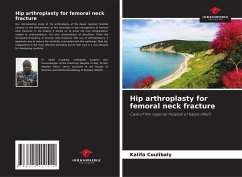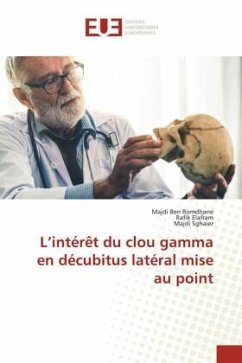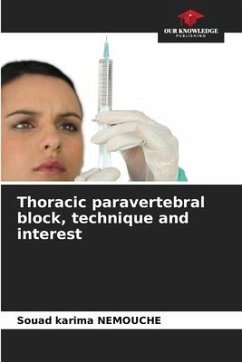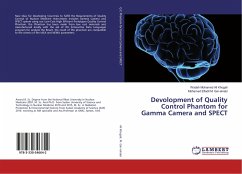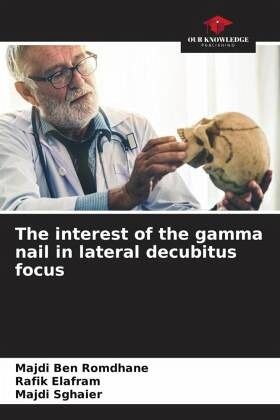
The interest of the gamma nail in lateral decubitus focus
Versandkostenfrei!
Versandfertig in 6-10 Tagen
29,99 €
inkl. MwSt.

PAYBACK Punkte
15 °P sammeln!
Trochanteric fractures are characterized by a line sitting in whole or in part in the region limited at the top by the base of the femoral neck and at the bottom by a line located 2.5 cm below the lesser trochanter. These fractures represent a very important and increasing part of traumatology and are characterized by a high social cost, thus constituting a major public health problem Up to 60 years, the number of these fractures is infrequent and only the functional prognosis is put at stake. On the other hand, in the elderly subject, increasingly exposed because of longevity itself, the vari...
Trochanteric fractures are characterized by a line sitting in whole or in part in the region limited at the top by the base of the femoral neck and at the bottom by a line located 2.5 cm below the lesser trochanter. These fractures represent a very important and increasing part of traumatology and are characterized by a high social cost, thus constituting a major public health problem Up to 60 years, the number of these fractures is infrequent and only the functional prognosis is put at stake. On the other hand, in the elderly subject, increasingly exposed because of longevity itself, the various defects accompanying it and by the progressive bone involution of the skeleton, the vital prognosis is also engaged, which justifies urgent surgical indications to allow early recovery. The debate concerns the variety of osteosynthesis to be applied open-hearth or closed-hearth on the one hand and the installation in dorsal decubitus or lateral decubitus on the other hand.





